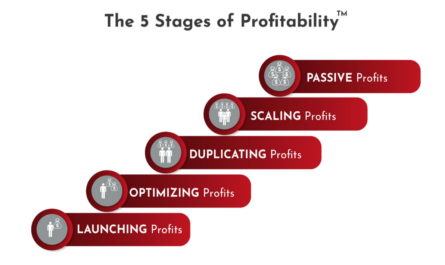A Just-In-Time in practice that can benefit group practices
By Dr. Sami Bahri
Judging by its record of accomplishment at Toyota and other companies, Just-In-Time (JIT) is one of the most economical production theories. To move from theory to practice, among many tools, JIT uses Kanban. What is Just-In-Time? And, what is Kanban?
JIT is an ideal system in which the items and workers needed arrive at the treatment area at the time and in the quantity needed. If we ignore JIT and produce more than ordered, earlier or faster than patient demand, we cause the most costly waste, overproduction.
Kanban is a simple and highly effective tool that facilitates JIT treatment. It avoids overproduction by preventing the costly excessive speed, and thus, allows utilizing the smallest amount of energy – human efforts, supplies, space, etc.
How could speed be costly?
As Taiichi Ohno, the creator of the Toyota Production System wrote in his book, “Toyota Production System: beyond Large-Scale Production”: “Speed is meaningless without continuity. Just remember the tortoise and the hare.” He means that unless we have enough business to go fast all the time, we would be rushing with a few patients, only to face a vacancy in the schedule and stop. Because of this unevenness, we end up hiring more employees than needed. That in turn can create many forms of waste, mainly the waste of overproduction.
To avoid overproduction, we need to match our resources to the speed of demand. If only a buildup and a crown are scheduled for a whole morning, there is no point in trying to finish the treatment as fast as possible. Instead, we should minimize the resources – mainly human resources – used in that procedure, and then redirect them for more productivity. For example, we can free up the assistant to go help with another patient or work in the lab while the dentist performs as much as possible without help. We will certainly call her back when her help becomes critical.
Slow down to be more productive
One advantage of JIT is to slow down while producing more. Again, in the words of Taiichi Ohno: “The slower but consistent tortoise causes less waste and is much more desirable than the speedy hare that races ahead and then stops occasionally to doze. The Toyota Production System can be realized only when all the workers become tortoises.”
However, we need to be careful when we express this idea. I have found that some people remember to work slower, but forget to work consistently. Unfortunately, they replace the fast and jerky hare, not with the desirable slow and consistent tortoise, but with an unproductive slow and jerky hare. We need to remind them that consistency and slowness go hand in hand, and that the goal is to produce an equalized amount of work at a comfortable pace.
To apply this philosophy of steady flow, equalized workload and just-in-time services, we translated the concept of Kanban to fit the practice of dentistry. Our first instinct was to use an electronic form of Kanban, but found that the paper works better.
Kanban is a signal
Kanban is a Japanese word that has been adopted in the English language; it simply means a signal. Why, then, do we use a Japanese word like Kanban instead of simply “signal”? Because most professions call it Kanban, and it would make more sense to keep our terminology consistent with theirs; that would allow you to research it for yourself if you so desired. When I was researching the Toyota Production System and its American version – the Lean system – the different terminologies confused me and wasted my time. To spare my reader that confusion, I decided to use terms that would keep Lean dentistry in line with the rest of the Lean terminology.
How does a Kanban work?
As the treatment is handed over between providers, a Kanban helps to maintain continuous flow by passing the right information to the next.
A Kanban is different from a routing slip. While the routing slip makes patient information accessible, Kanban aims at synchronizing the successive movements of providers. It allows for continuous treatment flow with the minimum amount of labor, and maximum time efficiency.
Here are some excerpts from my book: Follow the Learner, the role of a leader in creating a lean culture that explain our use of the Kanban. The passage recounts our story after we tried to implement one-patient continuous flow and encountered a communication problem among the different providers.
The Birth of Kanban at Bahri Dental Group
We discussed this problem in our morning meeting; we knew that Kanban was the answer. That’s how Toyota solves communication problems on its production line, by telling the previous step in the process exactly when and how much they should produce of a particular part or product. Ironically, I had promised my staff in 1997 that I would figure out how to use a Kanban in dentistry! [The solution was found in 2006]
Our Kanban look very different from those you’ll find at a Toyota factory. However, we designed them for the same purpose: communicate the who, what, where, and when for everyone on the team. The only difference is that we were moving the right people to the right place at the right time, instead of parts and products.
Our Kanban is divided into different horizontal rows (swim lanes) corresponding to the different dental providers. An arrow pointing to the hygienist lane, for example, means that the patient needs to be seen by the hygienist. The resulting pattern of arrows reflects the path of care that the patient will follow. But the patient never moves; we come to the patient. It’s critical to remember that the Kanban is NOT filled out ahead of time. This is NOT “assembly line dentistry.” The coordinated schedule is developed as each provider ensures that something value-added is always being done for the patient … no gaps!
The first swim lane belongs to the front desk assistant. We see the appointment time, the time when the patient actually arrived and signed in (SI), and the time the patient was brought back (BB) to the patient room. Our goal is to bring patients back at the same time they sign in (SI = BB).
Each provider has a swim lane with two times recorded: time given (TG) is the time that the provider receives the patient’s Kanban; time needed (TN) is the time that the provider is needed to begin his or her part of the treatment. Each provider adds information as to who the next provider should be, what he or she needs to do, and when they can or should begin their part of the treatment.
This determines which services get “pulled” next. When a provider gets a Kanban, he or she must assess whether the designated TN is possible.
If it is, there will be no gaps in the treatment.
If it’s not, then the flow manager helps the provider meet the schedule, finds another provider, or changes the sequence. In any case, the patient’s treatment continues uninterrupted.
In the example above, our patient had an appointment time of 9 a.m.; actually arrived, signed in, and was brought back at 9:07. The Kanban and the patient’s treatment then progress as follows:
- The assistant is given a Kanban at 9:07 to begin her work at 9:10. She begins the patient’s treatment at 9:10.
- The dentist receives the Kanban at 9:16, showing that he is needed at 9:20. The dentist sees the patient for the first time at 9:20.
- The assistant is given the Kanban at 9:21, asking her to do a preliminary impression at 9:22. The impression is made at 9:22 and the assistant numbs the patient’s gum for the next step in the treatment.
- The dentist is given the Kanban at 9:25, telling him that he is needed at 9:28. He arrives at 9:28, anesthetizes the patient, and begins treatment.
- The hygienist receives her Kanban at 10:18, requesting that she begin cleaning the patient’s teeth at 10:35. She begins the cleaning at 10:33.
- The dentist receives the Kanban at 10:57 to begin the final segment of treatment at 11:00. The dentist begins treatment at 11:00, as soon as the hygienist has completed the patient’s cleaning.
- The assistant receives the Kanban, telling her that she must be prepared to provide post-op instructions and prescriptions for the patient when today’s treatment is completed.
Each provider was able to meet their TN, the flow manager did not have to get involved, and the patient received four dental procedures and a cleaning in a single four-hour appointment.
We actually plan our day in the morning meeting, knowing that the schedule is likely to change because of factors beyond our control. However, once we start treating patients, we shift our attention to what to do next so that only the next move is important. The flow manager orchestrates our successive “next moves” for the entire workday. Her main tool is the mighty kanban. It synchronizes more precisely than any computer program I know, and it is simple.
Create your own Kanban
Although this Kanban model has been improved at least 20 times since its inception, it remains very explicative. Keeping the same principles of leveled production, flow, equalized work and synchronization in mind, I encourage you to create a Kanban that fit the needs of your own practice, and enjoy the benefits of a synchronized, highly productive and relaxed atmosphere.





